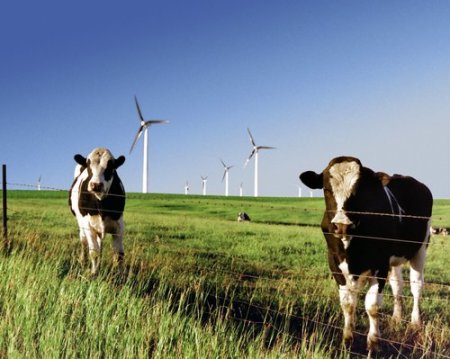 by Ivy Main, cross-posted from Power for the People VA
by Ivy Main, cross-posted from Power for the People VA
Appalachian Power Company has asked the State Corporation Commission to approve a 100% renewable energy product it wants to offer its environmentally-conscious electricity customers. These customers would pay about 18% more for a combination of wind and hydro than they currently do for “brown” power. But APCo doesn’t plan to build new facilities. It will simply segregate out some of its existing wind and hydro (none of it in Virginia) to package as a new, higher-priced product.[i] The case is PUE-2016-00051.
Since APCo currently sells the renewable energy certificates (RECs) associated with these wind and hydro projects to buyers elsewhere, the change means it would terminate those contracts and provide the RECs to its green energy customers along with the electricity. RECs represent the “renewable attributes” of the power (the bragging rights, if you will), so the electricity by itself doesn’t count as renewable if it doesn’t come with the RECs.
The price of RECs represents only a part of the 18% premium. RECs are really cheap nationally, because supply exceeds demand.[ii] Another driver of the premium is that wind energy was more expensive back in 2007-2010, when these projects were built. Falling wind prices and a natural gas glut have pushed overall energy prices down since then. APCo customers are still paying off the cost of its wind farms (or in the case of two of them, are still paying on power purchase contracts). APCo proposes to shift the burden of paying for those wind farms onto the customers it believes are willing to pay more. At least theoretically, this means it will also reduce the price it charges the rest of its customers, who (it assumes) don’t care where their power comes from.
APCo says if demand is high enough, it will invest in new renewable energy facilities to add supply, which might decrease the cost of the tariff in the future. Cost declines have made new wind competitive with fossil fuels, so a tariff based on new facilities would have lower pricing.
Page 37 of APCo’s filing shows the effect of the accounting change on a customer’s bill for a residential customer using 120 kWh/month:
100% RE: $160, non-RE customers: $135
or an extra $25/month, $300/year
By my math that comes out to:
100% RE: 13.3 cents/kWh, non-RE customers: 11.3 cents/kWh
No doubt APCo is responding to consumer demand in proposing this renewable energy tariff. Virginians have become much more vocal, and much less patient, about wanting their utilities to invest in clean energy. But APCo has less virtuous motives as well. Offering electricity generated by 100% renewable energy closes off one avenue under which solar developers currently argue that third-party power purchase agreements (PPAs) are legal. PPAs are a common tool for financing solar projects, and are the only way some customers can afford to buy renewable energy. They are not being used today in APCo territory because of the risk that the utility will sue, claiming a violation of its monopoly on electricity sales.
The Virginia Code contains an exception to utilities’ exclusive monopoly in their territory: if a utility doesn’t sell 100% renewable energy to its customers, anyone else can. The SCC previously ruled that selling RECs doesn’t count, so APCo and Dominion’s own green power programs (consisting mostly of overpriced RECs) do not close the loophole. I have always wondered why they didn’t just do what APCo now proposes, if for no other reason than to close the loophole. The Code says nothing about the green power having to be reasonably priced.
Recall that we are still waiting for the SCC to rule on APCo’s terrible PPA-alternative proposal. The solar industry and environmental groups opposed the proposal not just because it was expensive, convoluted and certain to fail, but also because the Code’s renewable energy exception appears to allow PPAs already, making the APCo program unnecessary.[iii]
APCo and Dominion argue that the Code exception applies only where the seller supplies 100% of the customer’s demand, 100% of the time, with 100% renewable energy. A single wind farm can’t guarantee around-the-clock output, so APCo has combined wind energy with some hydro. That’s something a wind or solar developer can’t do, especially when the developer is merely putting solar panels on a customer’s roof.
These are nice legal arguments guaranteed to keep lawyers employed and the market in limbo. From the public policy point of view, though, there is nothing to be gained by suppressing the renewable energy market. Why squelch private investment and deny customers the right to use a popular financing tool to install wind and solar? For customers willing to pay a premium, why limit them to APCo’s product? If a company wants only wind power or solar power, why not let them contract with any willing provider?
The SCC should definitively declare in favor of PPAs, open the market to competition, and let the free market get to work. If the SCC won’t do it, the legislature should. If customers want APCo’s renewable energy product, terrific. If they can do better elsewhere, let them. We all win by creating new clean energy jobs, having carbon-free electricity displace fossil fuels, and giving customers the products they want.
[i] Page 6 of APCo’s Petition states: “Initially, the Company will assign to Rider REO the output of its renewable generators that are currently under long-term Purchased Power Agreements (the ‘Renewable PPAs’): the Summerville hydro-electric facility, and the Camp Grove, Fowler Ridge, Beech Ridge, and Grand Ridge wind facilities.” The Summersville dam, in West Virginia, was built in 2001. The Camp Grove Wind farm is in Illinois and began operation in 2007. Fowler Ridge, in Indiana, was commissioned in 2008. Beech Ridge, in West Virginia, became operational in 2010. Grand Ridge, in Illinois, was built in 2009.
[ii] It appears from APCo’s filing that its wind RECs sell for $18/MWh, or 1.8 cents/kWh. I don’t see a price stated for hydro RECs in APCO’s filing, but they typically have little value.
[iii] A second basis for believing that PPAs are legal does not rely on the Code exception. Rulings from Iowa and New Hampshire have recognized that PPAs involving rooftop solar are not the kind of electricity sales covered by public utility regulations. APCo’s new offering does not undercut that argument.



![Monday News: Trump’s Lunacy Pushes China, Russia, India, etc. Together; “Happy Labor Day. Donald Trump and Elon Musk Are Screwing Workers.”; “Where is the [media’s] intense focus on Trump’s failing health?”; ““Trump says he is not a dictator. Isn’t he?”](https://bluevirginia.us/wp-content/uploads/2025/09/montage0901-238x178.jpg)










![Monday News: Trump’s Lunacy Pushes China, Russia, India, etc. Together; “Happy Labor Day. Donald Trump and Elon Musk Are Screwing Workers.”; “Where is the [media’s] intense focus on Trump’s failing health?”; ““Trump says he is not a dictator. Isn’t he?”](https://bluevirginia.us/wp-content/uploads/2025/09/montage0901-100x75.jpg)